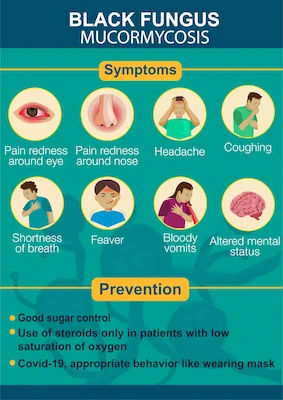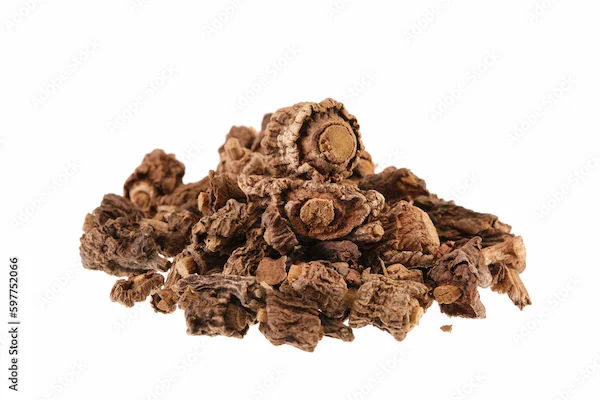How to Reduce Platelet Count: Effective Methods and Treatments Explained
Learn how to reduce platelet count with effective treatments, lifestyle changes, and natural remedies. Discover medical options, dietary tips, and when to seek help.

Written by Dr.Sonia Bhatt
Last updated on 3rd Jul, 2025

Introduction
Platelets, also known as thrombocytes, are small blood cells which play a crucial role in blood clotting. While they are vital for wound healing, having an excessively high platelet count—known as thrombocytosis—can lead to serious health complications. High platelet counts can cause blood clotting, which may increase the risk of stroke, heart attack, or even deep vein thrombosis (DVT).
What is a High Platelet Count (Thrombocytosis)?
Thrombocytosis occurs when the platelet count in the blood exceeds the normal range, which is typically between 150,000 and 450,000 platelets per microliter of blood. There are two primary types of thrombocytosis:
Primary (Essential Thrombocythemia): This is a rare condition caused by genetic mutations in the bone marrow, which leads to excessive platelet production. It is often a result of abnormalities in the JAK2 gene, which controls blood cell production.
Secondary (Reactive Thrombocytosis): This more common form of thrombocytosis occurs in response to other underlying conditions, such as inflammation, infections, or certain cancers. Unlike primary thrombocytosis, secondary thrombocytosis is typically not caused by genetic mutations but rather by an overproduction of platelets in response to other factors.
Symptoms of High Platelet Count
While no symptoms are found in some individuals with a high platelet count, others may have certain signs indicating an elevated platelet level. Common symptoms include:
Headaches: Persistent or severe headaches can occur due to blood clotting.
Dizziness or Lightheadedness: A higher risk of clotting can reduce blood flow to the brain.
Easy Bruising or Abnormal Bleeding: Although this may seem counterintuitive (since platelets are involved in clotting), excessive platelets may lead to bleeding problems.
Tingling or Numbness in Extremities: A sign that the blood flow might be restricted due to clot formation.
Chest Pain: When blood clots affect the heart’s arteries, chest pain can occur, potentially leading to heart attacks.
With unmanaged thrombocytosis, the risk of life-threatening blood clots, strokes, and heart attacks increases. So, diagnosis and treatment of such a condition is essential.
Medical Conditions Linked to High Platelet Count
Thrombocytosis is commonly associated with several medical conditions:
Inflammatory Diseases: Chronic inflammatory conditions like rheumatoid arthritis or inflammatory bowel disease (IBD) can lead to elevated platelet counts.
Infections: Bacterial or viral infections, such as pneumonia or tuberculosis, can result in secondary thrombocytosis as the body tries to fight the infection.
Cancer: Certain cancers, including lung, gastrointestinal, or ovarian cancer, are associated with reactive thrombocytosis.
Iron Deficiency Anemia: A lack of iron in the body can cause an increase in platelet production as the body tries to compensate for lower red blood cell levels.
Managing these health conditions is important in reducing platelet count and preventing further complications.
How to Diagnose a High Platelet Count?
The diagnosis of a high platelet count typically involves:
Blood Tests: A complete blood count (CBC) will measure the number of platelets in the blood. Further tests may be ordered if the platelet count is higher than normal.
Bone Marrow Biopsy: In cases of primary thrombocytosis, a biopsy may be conducted to examine the bone marrow and determine if abnormal cell production is occurring.
Genetic Testing: If essential thrombocythemia is suspected, genetic tests (such as JAK2 mutation analysis) may help confirm the diagnosis.
Other Tests: To rule out infections, cancers, or inflammatory diseases, additional diagnostic procedures, such as imaging tests or cultures, may be required.
Find Out Your Platelet Count
Treatment Options to Reduce Platelet Count
Once thrombocytosis is diagnosed, the treatment approach will depend on the type and underlying causes. Here are common treatments to reduce platelet count:
1. Medications
Medications are commonly used to manage thrombocytosis by regulating platelet production and reducing the risk of clot formation. Depending on the severity and underlying cause, doctors may prescribe specific drugs to lower platelet count and prevent complications.
Aspirin: Aspirin is often prescribed to reduce platelet aggregation and prevent clot formation. It is typically used in mild cases of thrombocytosis or for individuals with additional cardiovascular risks.
Hydroxyurea is a medication commonly used for primary thrombocytosis. It works by suppressing bone marrow activity reducing the overproduction of platelets.
Interferon-alpha: This treatment may be recommended for patients with primary thrombocytosis who cannot tolerate hydroxyurea. Interferon helps regulate platelet production by modulating the immune system.
Anagrelide: This drug specifically targets platelets, lowering their production in the bone marrow. It is often used when other treatments are not effective.
2. Targeted Therapy
These treatments help control platelet overproduction while minimising side effects associated with conventional medications.
JAK2 Inhibitors: For individuals with mutations in the JAK2 gene, newer medications, such as JAK2 inhibitors (e.g., ruxolitinib), may reduce platelet count and manage the disease more effectively.
3. Plateletpheresis
In severe cases of thrombocytosis, a procedure called plateletpheresis may be required. This process involves filtering the blood to remove excess platelets, which can provide immediate relief until more sustainable treatments can be implemented.
Lifestyle Changes to Help Manage Platelet Count
Beyond medication, certain lifestyle changes can help manage platelet levels and reduce the risk of complications:
1.Dietary Modifications:
Foods that reduce platelet aggregation: Garlic, ginger, turmeric, and fatty fish (like salmon and mackerel) contain natural compounds that can reduce platelet clumping and improve circulation.
Foods to avoid: Limiting alcohol intake and processed foods can help reduce inflammation in the body, which may contribute to an elevated platelet count.
2.Regular Exercise: Physical activity improves blood circulation, helps reduce inflammation, and promotes overall heart health. It can also help maintain a healthy weight, which can contribute to more balanced platelet levels.
3.Stress Management: Chronic stress has been linked to elevated platelet counts. Techniques like mindfulness, yoga, deep breathing exercises, and regular sleep can help manage stress and support overall health.
Natural Remedies and Supplements for Reducing Platelet Count
While medication is often necessary for treating thrombocytosis, natural remedies and supplements may support platelet health:
Curcumin (from turmeric): Curcumin has natural anti-inflammatory properties and may help reduce platelet aggregation. It can be consumed in food or as a supplement.
Ginkgo Biloba: Known for its circulation-boosting effects, Ginkgo biloba may help prevent excessive platelet aggregation, reducing the risk of blood clots.
Green Tea: Rich in antioxidants, green tea is thought to help prevent platelet aggregation and improve overall heart health.
Omega-3 Fatty Acids: Found in fatty fish and certain supplements, omega-3s can help lower platelet aggregation and inflammation.
Vitamin E: This vitamin has anticoagulant properties and may support platelet health. It can be consumed through nuts, seeds, and leafy greens.
When to Seek Medical Attention?
If you suspect a high platelet count, it’s essential to consult with a healthcare provider. You should seek medical attention if:
You experience persistent or unexplained symptoms such as headaches, dizziness, or abnormal bleeding.
You have a family history of blood disorders or have been diagnosed with a condition that could cause thrombocytosis.
You develop new symptoms, such as chest pain, numbness, or tingling, which could be signs of a blood clot.
Timely intervention can prevent complications like stroke, heart attack, or organ damage due to blood clots.
Preventive Measures for Maintaining Normal Platelet Levels
Maintaining normal platelet levels involves regular monitoring and managing underlying health conditions:
Regular Check-Ups: For individuals with chronic conditions like rheumatoid arthritis, IBD, or cancer, regular blood tests can help monitor platelet levels.
Proper Treatment of Underlying Conditions: Managing inflammatory diseases, infections, and nutritional deficiencies can prevent reactive thrombocytosis from developing.
Healthy Lifestyle Habits: A balanced diet, regular exercise, stress management, and avoiding smoking or excessive alcohol consumption are key to healthy platelet levels.
Conclusion
A high platelet count can lead to serious health complications, but it can be effectively managed with proper diagnosis, treatment, and lifestyle changes. It’s important to seek medical advice and explore treatment options that best suit your needs. Along with medical interventions, adopting a healthy lifestyle that includes a balanced diet, regular exercise, and stress reduction can contribute to maintaining a healthy platelet count and overall well-being.
Consult Top Haematologists
Consult Top Haematologists

Dr. Thorana Prakash M
General Physician
2 Years • MBBS
Bengaluru
PRESTIGE SHANTHINIKETAN - SOCIETY CLINIC, Bengaluru

Dr. Sushith C
General Physician
2 Years • MBBS
Bengaluru
PRESTIGE SHANTHINIKETAN - SOCIETY CLINIC, Bengaluru
Dr Sumanth R
General Physician
2 Years • MBBS
Bengaluru
PRESTIGE SHANTHINIKETAN - SOCIETY CLINIC, Bengaluru

Dr Vijaykumar Shirure
Haematologist
8 Years • MBBS, MD, DM (Clinical Hematology), Fellow (Hemato-oncology), Fellow (Bone Marrow Transplantation)
Ahmedabad
Apollo Hospitals Gandhinagar, Ahmedabad
Dr. Sachin Bansal
Haematologist
10 Years • DM (Clinical Hematology)
Bhopal
Apollo Sage Hospitals, Bhopal





